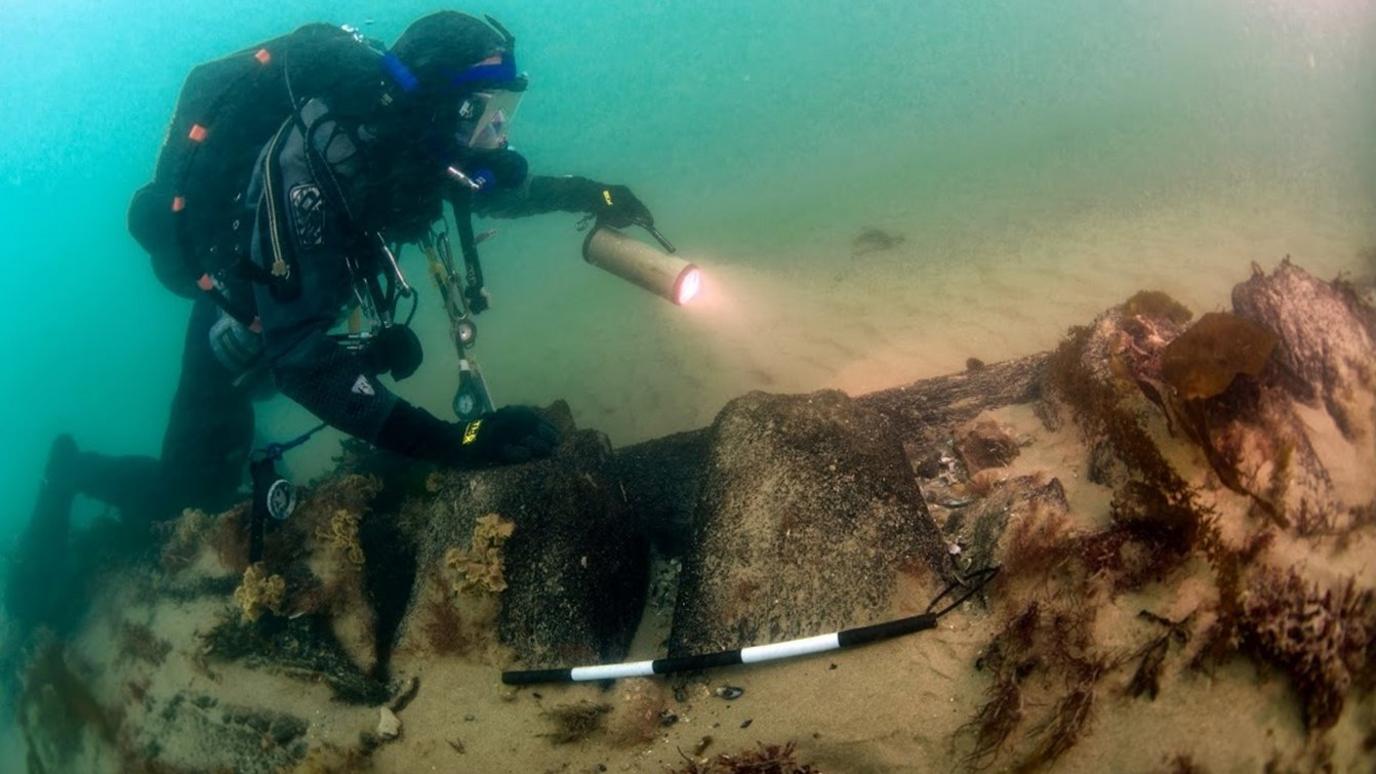Portsmouth HMS Invincible shipwreck artefacts to go on show
- Published
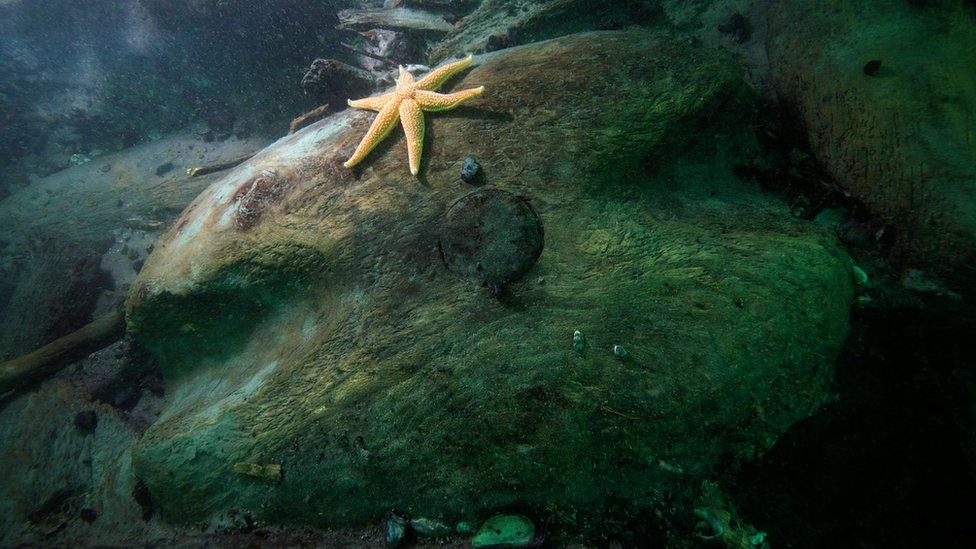
Divers began excavating and removing artefacts from the HMS Invincible shipwreck in May
Artefacts excavated from a warship that was wrecked in the Solent in 1758 are to go on show for the first time.
HMS Invincible - built by the French in 1744 and captured by the British in 1747 - is believed to be one of the most significant warships ever built.
The first part of a major excavation of the Royal Navy vessel has been carried out with hundreds of items, including a bottle of corked rum, rescued.
They will be shown at Poole's Maritime Archaeology Sea Trust on Saturday.
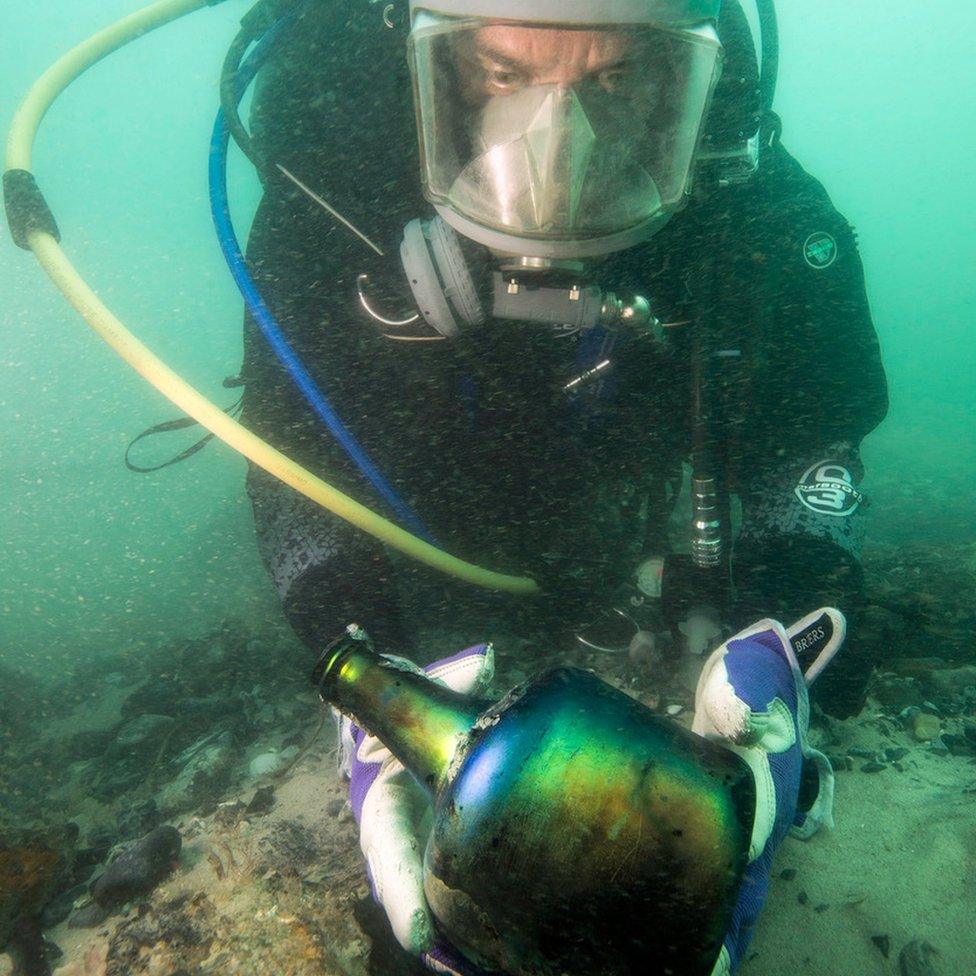
Among the artefacts rescued is a corked bottle of rum
The project is being led by Poole's Maritime Archaeology Sea Trust (MAST), National Museum of the Royal Navy and Bournemouth University, and is officially endorsed by the Duke of Edinburgh.
The team will also be recruiting service and ex-service volunteers, as well as young people not in education, employment or training, during the open day to help in the post excavation, conservation and recording phase.
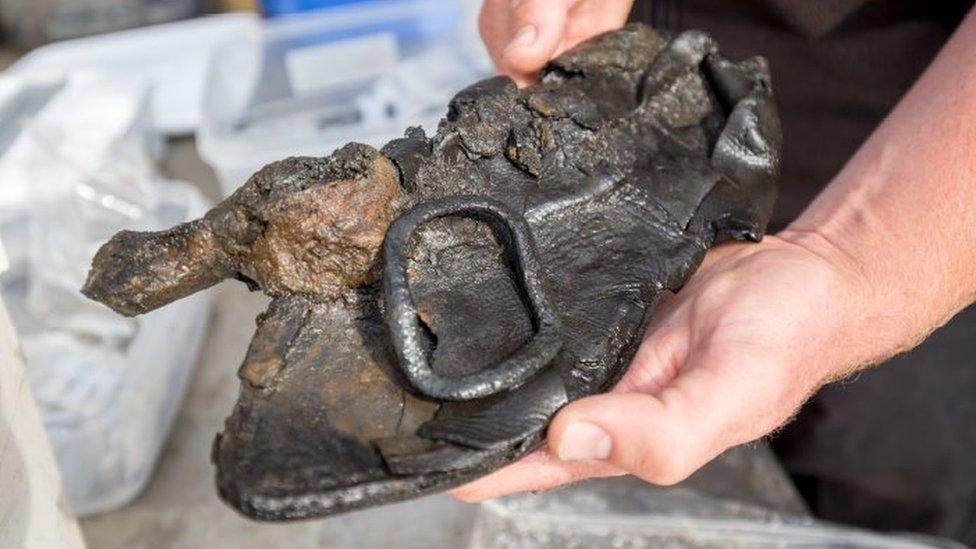
Timbers, rope and gun wadding (pictured) have also been recovered
Other items on show include timbers, rope, a button from the Coldstream Guard regiment of the British Army and gun wadding "including a tally stick to denote the wadding was for use in the experimental 24-pounder gun", MAST said.
Archaeologists say the finds will help them build a clearer picture of what life was like for sailors more than 200 years ago.
The items are expected to go on permanent exhibition in a couple of years.
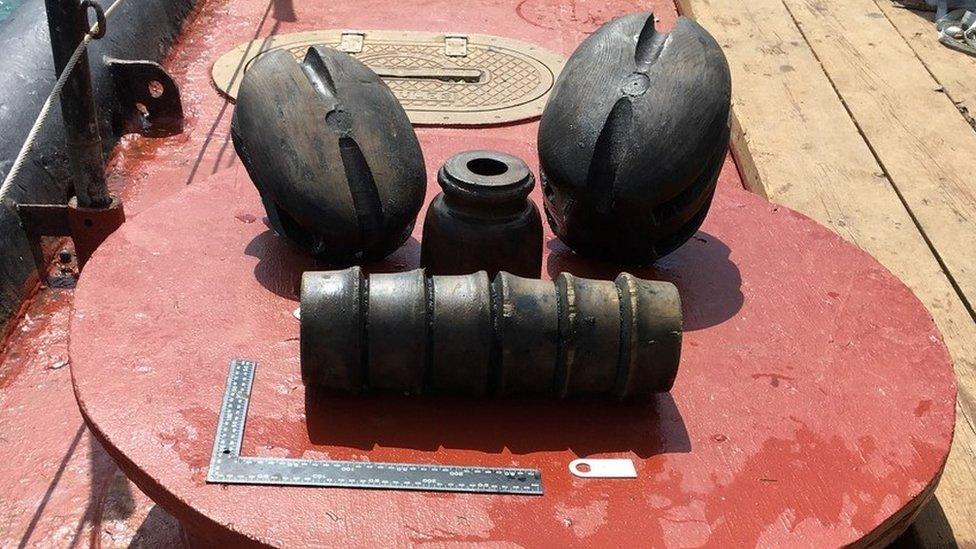
The artefacts, which also include ship timbers, are expected to go on permanent display in a couple of years
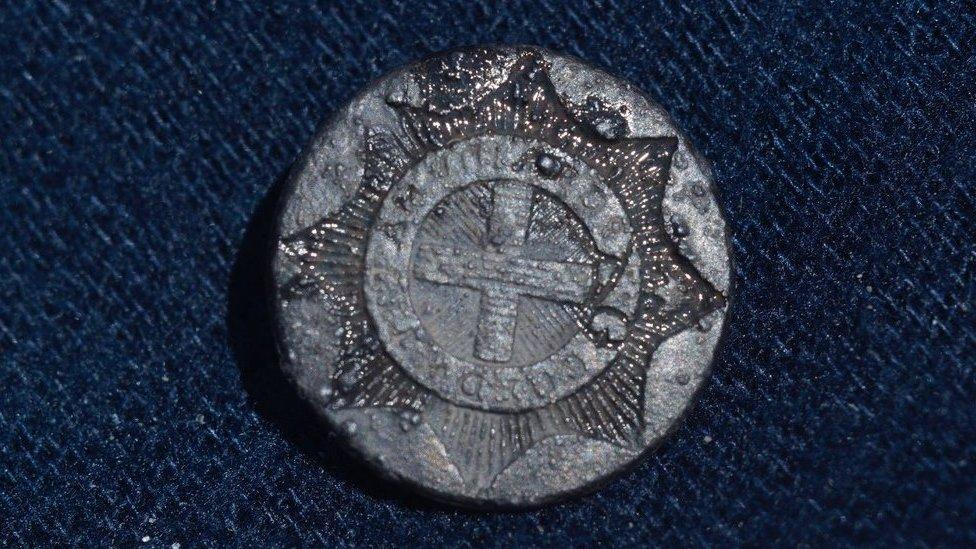
A preserved button from the Coldstream Guard regiment was also found on the ship
The 74-gun ship was lost when its rudder jammed and it ran aground on a sandbank between Langstone Harbour and the Isle of Wight, capsizing three days later.
The project to excavate it was awarded £16,400 of Heritage Lottery funding in July.
In 2016, MAST was awarded a £2m Libor grant, from fines levied on the banking industry, to address the "critical risk" to the wreck.
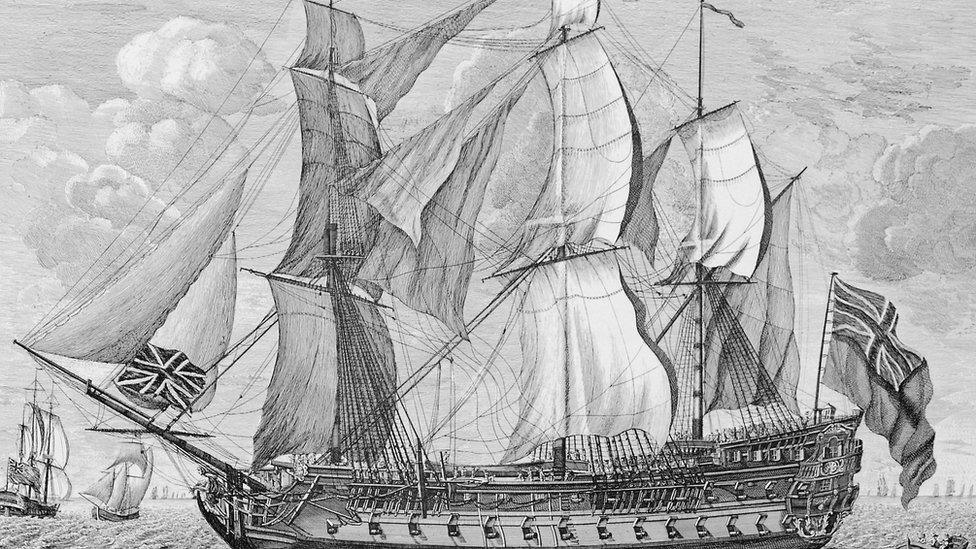
HMS Invincible's class of ships became the "backbone of the Royal Navy", the National Museum of the Royal Navy said
- Published7 July 2017

- Published7 April 2017
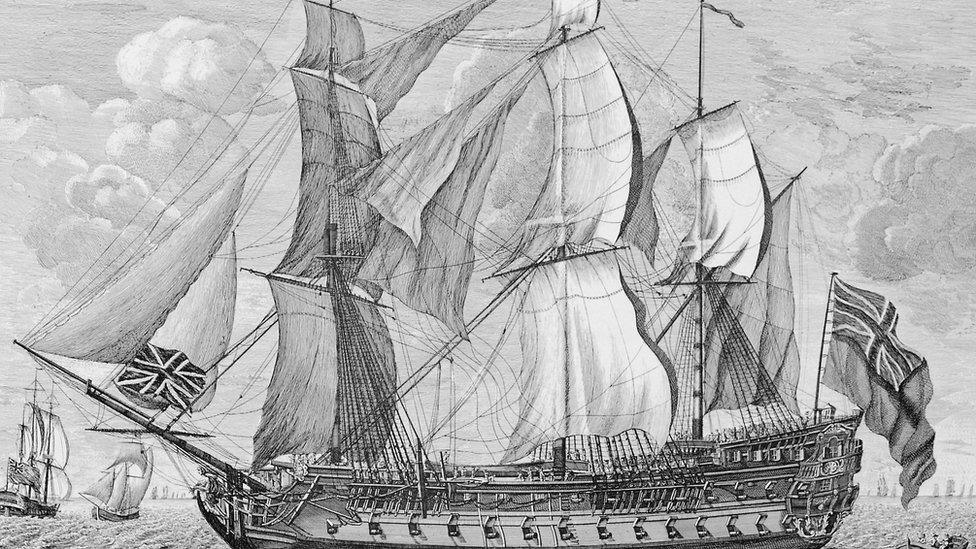
- Published10 October 2013
